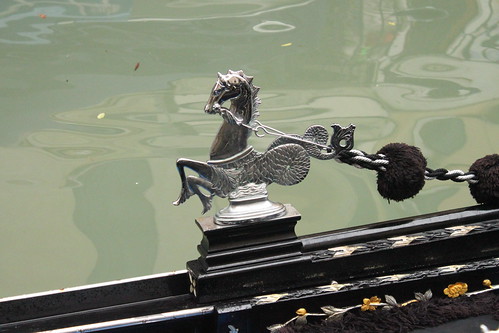Here’s my list of Venice’s Fascinating Facts and they’re all Firsts (mostly):

Mirrors
The mirror as we know it, a layer of flat or ‘plate’ glass on a thin sheet of reflecting metal was possibly invented in the 16th century by a German or Flemish inventor – it’s not known exactly who came up with the method.
However, what we do know is that it was the Venetians in Murano – already experts in glass manufacturing – who began making these mirrors on a large commercial scale. By the seventeenth century it had become the largest mirror-manufacturing city in the world.
The method for making the perfect reflective surfaces was kept secret for a long time and as a result, mirrors were extremely expensive. In 1683 a Venetian mirror belonging to the deceased French minister Colbert was sold for three times the price of a Rubens painting!
Zoning
For all you city planning enthusiasts out there, the concept of formally zoning a city originated in Venice.
If you’ve ever played Sim City you’ll know that city zones are industries separated by location. Peter Ackroyd gives as examples cloth-stretchers who were located in the west and tin-smiths to the north-east of the city. San Niccolo had Fishermen and silk-workers were concentrated in the Dusoduro district, Sestiere di Castello sailors and shipbuilders. The Lido specialised in recreation and acted as a seaside resort and of course Burano was the centre for glass-making.

Paperback book
As well as inventing Italic type, establishing the use of the semicolon and the modern appearance of the comma, Aldus Manutius the Elder in the fifteenth century came up with the idea of the compact book in the form of the ‘octavo’ – similar to what we now know as the paperback book.
The simple notion behind these portable reading materials was to create something that could be carried easily in saddlebags. Virgil’s “Opera” was the first published in this format.
Incidentally, Aldus used a dolphin wrapped around an anchor as his company logo – have a look at Doubleday’s logo
Ghetto
The extremely negative connotations of the word Ghetto originated in Venice.
The word probably originally came from ‘gettare’ – the casting of metal or ‘getto’ (that’s the noun for a metal cast) which was concentrated (see previous item on zoning) on the edge of the Cannareggio district.
700 Jews were enclosed on the site of a former metal foundry there from 29th March 1516 and the Jewish community remained in the area until the 18th century when Napoleon arrived and the Ghetto was disbanded.
Completely surrounded by water, two bridges were the inhabitants’ only entrance into the city and both were closed off at night.

Gondola
Ha – you would think the gondola would be on this list, but the boat may have originated in either Malta, Turkey or Avignon. (There’s a great post about gondolas on the Bosphorus here)
We do know that they were being floated around Venice as early as 1094, however, as it was documented that the Doge declared that ordinary people could build there own gondolas from that time. By the the sixteenth century there were 10,000 gondolas on the canals.
Did you know that the reason they’re black is that in 1562, ornamentation on them was banned by a government who were down on self-expression?
Spectacles
Pisa and Florence are in competition for the title of inventor of the eyeglass, however, the College of Optometrists think that they were most likely invented in the Veneto region, and that’s good enough for me.
Their development probably occurred around 1286 and by the fourteenth century, thousands of pairs were being made in Venice and transported around the world. Here are some beautiful handmade glasses still being made in the city.

Lido
When an average Briton thinks of a lido, a 1930s outdoor swimming pool and surrounding facilities springs to mind. The deck with the swimming pool on a cruise ship is known as the ‘lido deck.’ Lidos in Italy and other areas of Europe are simply beaches. But where did the term originate? Venice, of course.
The Lido in Venice is an island that comprises of an 11km (or 18km or 20 km depending on who you read) long sandbar in the Lagoon of Venice. It’s the city’s main protection against the ravages of the Adriatic.
The first bathing facilities were set up on one of its long stretches of beach in 1857 and the word soon became the generic word for beach resort (and draughty swimming pool).
And finally
Venice is still a mesmerizing city for different reasons, but it’s good to remember what an influence it’s been on human history.

Born in Belfast and now living in London, Julie McNamee is involved in internet marketing as a day job and blogging as a hobby. She’s interested in all things quirky and Fortean, as well as art, photography and theatre. Her blog Quirky Travel, specializes in London and Paris top tips and off the beaten path information with subjects such as London film locations and unusual Paris museums.








